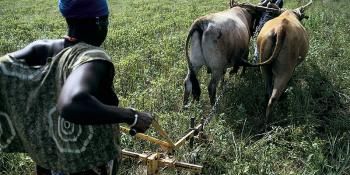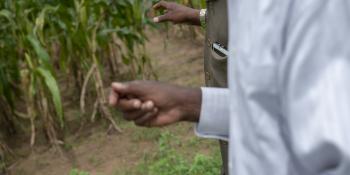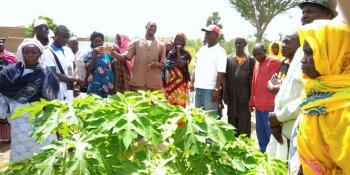Mitigating change in climate relations: breeders and modelers of Africa unite for climate-smart crops
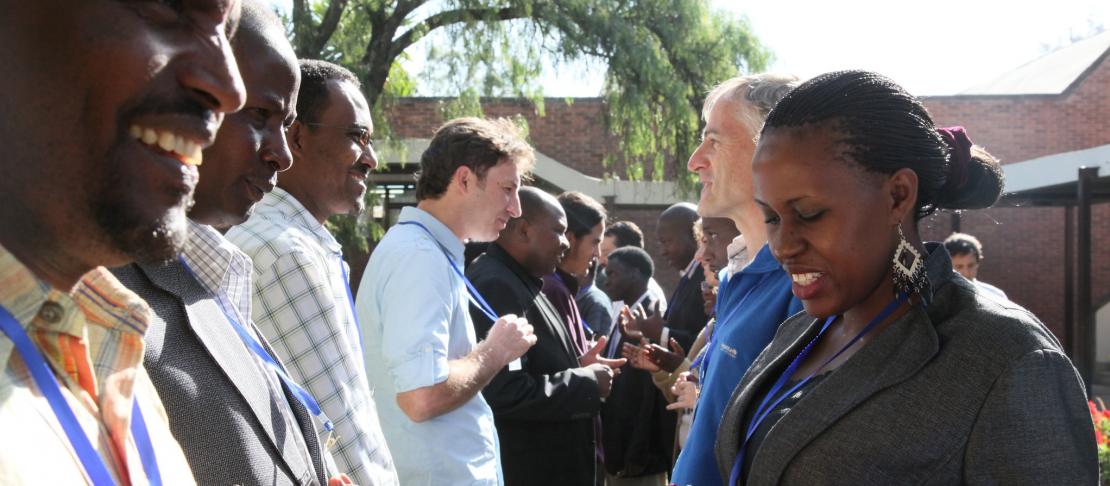
They came and met; they discussed, argued, they laughed and they planned, they went around and went away. But they did it all together, and after three days of intensive work, African breeders and modelers came out one step closer to uniting around the challenge of climate-smart crops.
From 6 to 8 December, CCAFS theme 1 organized a workshop staged on the Addis Ababa campus of the International Livestock Research Institute (ILRI). The workshop titled ‘Developing climate-smart crops for 2030 world’ involved over 40 participants from 16 countries, broadly divided along either side of the breeding/modeling continuum.
At the onset of the workshop, that continuum looked more like a chasm. Modelers and breeders have long been operating indifferently to one another. But climate variations are perhaps urging a change in perspectives and relations with one another. Breeders seem to have dismissed models – whether for climate-change or other issues – for their breeding work with respect to their absence of context and attention for the reality of breeding crops. In turn, modelers have found it difficult to get breeding strategies to consider the pertinence of their own models, to look outside the breeding box. The only cases known of interactions between the two communities around climate change seem to have focused on the symptoms (e.g. dealing with drought) rather than a strategy to mitigate climate change and develop climate-smart crops.
The 2030 climate-smart crops workshop was a first attempt in the CCAFS programme to try and collectively develop a broader picture of the challenges of breeding in an increasingly climate-uncertain future by bringing together members from these two communities from East and West Africa. During three days collective discussions identified the broad challenges of a 2030 world for breeding strategies, the regional issues that affect breeding and ultimately the specific challenges for each of the four key crops in consideration in the CCAFS programme: Bananas, beans, rice and sorghum.
It seems obvious that crop breeders have to be involved in developing climate-smart crop strategies. Indeed, only breeders really understand the long term process of breeding (over ten years for bananas and generally rather long periods for better quality crops). Modelers may come up with valid conceptual frameworks but implementation rests with breeders. However, the imminence of novel climates and the increasing recognition of the complexity surrounding climate change calls for a different approach to ‘breeding business as usual’.
Breeding can no longer be restricted to one location. Multiple locations allow a better understanding of the climate variations affecting their crops, their livelihood and beyond. Breeding also needs to consider various other aspects: the (changing) needs and demands of the population in the target environment, the crop quality and its constraints, the likelihood of various climate scenarios that might affect breeding, the importance of developing drought tolerant crops etc.
Why did this not happen before? Breeders are sometimes isolated, as illustrated by the chasm mentioned above; also among breeders there seems to be little interaction and limited options for training. Yet, the workshop participants highlighted a variety of options to work together for climate-smart crops – one that relies on more cooperation with modelers and other actors. How can that cooperation take shape?
Ways forward for climate-smart breeding strategies?
More interaction is required at all levels: among breeders, with modelers, but also with a wider variety of specialists that all have a role to play in developing robust breeding strategies: farmers, climatologists, traders, consumers, nutritionists, pathologists, entomologists, agronomists, physiologists, soil scientists etc.
This interaction can take various shapes:
- Interaction via information-sharing platforms or workshops like this one;
- Developing incentives for breeders to consider modeling inputs;
- Additional funding to develop smarter breeding programmes;
- Involving breeders in the development of new agro-climatic analysis and modeling tools;
- Crucially, breeders should be included from the start of any modeling initiative that concerns them, as was repeatedly pleaded throughout the workshop.
These solutions came up as only one set of answers (among others) within each crop group. The workshop brought breeders and modelers together in those crop groups and each of them managed to develop: a vision for how their crop should evolve by 2030, an idea about the approach they would follow to achieve that vision, a list of constraints they might encounter and crucially a typology of traits and target environments they should focus on (all presentations are available on the CCAFS SlideShare).
Beyond solutions, the workshop also helped forge new alliances. One of the most promising is between CCAFS and The West African Centre for Crop Improvement (WACCI).
Training plant breeders at WACCI to accelerate the Green Revolution in West and Central Africa
View more presentations from CCAFS | CGIAR program - Climate Change, Agriculture and Food Security
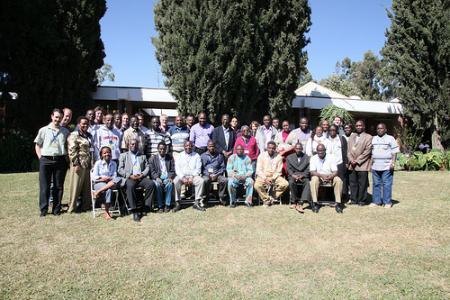
Participants of the workshop in December. Photo: L. Dejene (ILRI).
Read also the Decision and Policy Analysis (DAPA) blog for more information.
